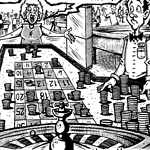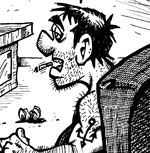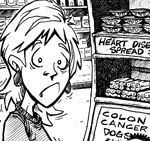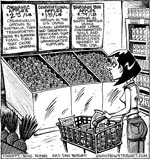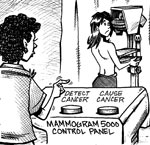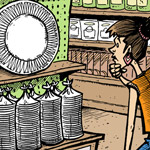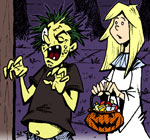Are There Ever Side Effects to Taking Vitamin D?
| Share on Facebook | Share on Twitter | Share on Google+ |
Vitamin D is an essential and very safe nutrient, and side effects from taking vitamin D are very rare. Some people who get an accidental overdose of vitamin or who take extremely high amounts of vitamin D, however, may suffer serious, but correctable, health problems.
Vitamin D Side Effects and Hypervitaminosis D
The condition of vitamin D overdose is known as hypervitaminosis D. About the lowest dosage that causes the symptoms of vitamin D overdose is 77,000 IU (1925 micrograms) a day over two or three months.
It's also possible to experience vitamin D poisoning after taking 600,000 IU (15,000 micrograms) in a single dose or over just a few days. Both conditions have the same symptoms:
- Constipation
- Dehydration
- Loss of appetite
- Vomiting
- Irritability
If the overdose is not corrected for several weeks or longer, then calcium begins to accumulate in the bloodstream. Blood pressure rises and stresses the kidneys, which may also develop stones. Calcium may accumulate in the skin, in muscles, along the spine, or even in the brain. These symptoms are even more acute when an overdose of vitamin D is used in an attempt to treat active cancer.
Can You Get a Vitamin D Overdose by Staying in the Sun?
Since the body makes its own vitamin D when sunlight falls on the skin, it's reasonable to wonder whether too much sunshine could create a toxic overdose of vitamin D. The answer is that it cannot.
The reason too much sunshine does not cause toxic accumulations of vitamin D is that when the skin makes about 10,000 IU of vitamin D in any one day, any additional vitamin D is degraded back into cholesterol. This cholesterol does not clog your arteries or cause any other detrimental effects. It stays in your skin to make vitamin D another day.
Can You Get a Vitamin D Overdose Symptoms from Food?
It's even less likely that you could ever get too much vitamin D from food. The most concentrated source of vitamin D is cod liver oil. To get 1,000,000 IU of vitamin D from cod liver oil, you would have to swallow 600 tablespoons (about 9 liters, or more than two gallons) of cod liver oil in one day. Long before you drank that much oil (which is something you should never attempt), your digestive tract would start removing it by vomiting or diarrhea.
It is even harder to get vitamin D poisoning from food. To get 1,000,000 IU of vitamin D, you would need to eat:
- 4000 whole eggs,
- 320 kilos (705 pounds) of beef liver, or
- 1200 kilos (2600 pounds) of mushrooms.
You just can't get an overdose of natural vitamin D. It is extremely rare, but not unheard of, for someone to get an overdose of vitamin D from enriched dairy products, but this is due to a break in the spray jet that adds the vitamin to milk.
How Is Vitamin D Overdose Treated?
The first step in treating vitamin D overdose is to stop taking vitamin D! Then it is necessary to stay on a low-calcium diet and possibly to take steroid drugs for a month or so. Almost everyone who gets treatment, however, gets over the overdose.
Selected Reference:
Hathcock JN, Shao A, Vieth R, Heaney R (January 2007). Risk Assessment for Vitamin D. Am. J. Clin. Nutr. 85(1): 8-16.
-
Skin CareMen Skin Care
-
Free ResourcesFree eBooks
-
A good laugh and a long sleep are the best cures in the doctor's book.Irish Proverb
-
Featured Health Supplement
 If you find a product that is as effective as Total Balance, and is better value for money, let us know and we will give you a refund equivalent to your entire purchases of Total Balance…retrospective.
If you find a product that is as effective as Total Balance, and is better value for money, let us know and we will give you a refund equivalent to your entire purchases of Total Balance…retrospective.
-

